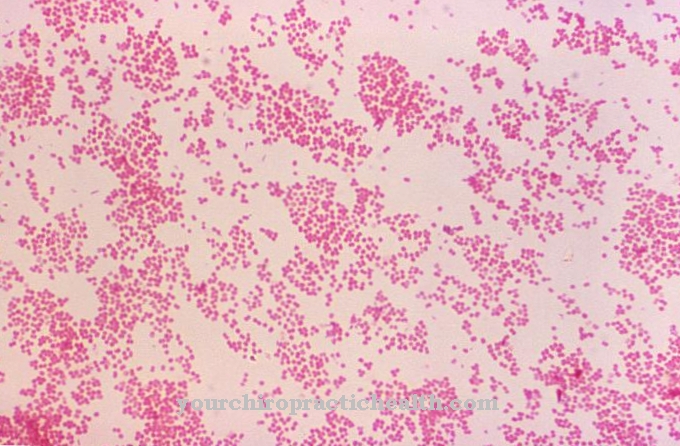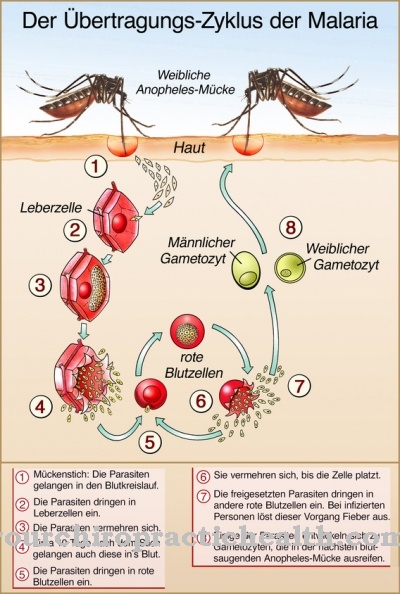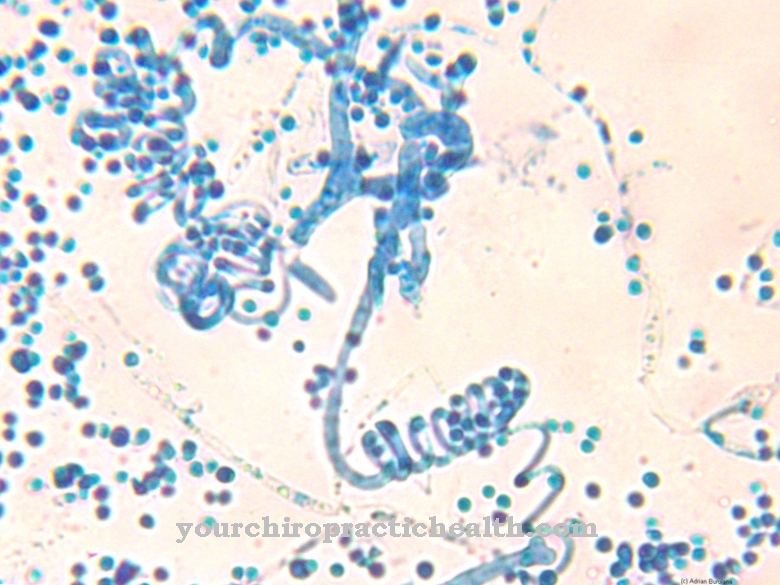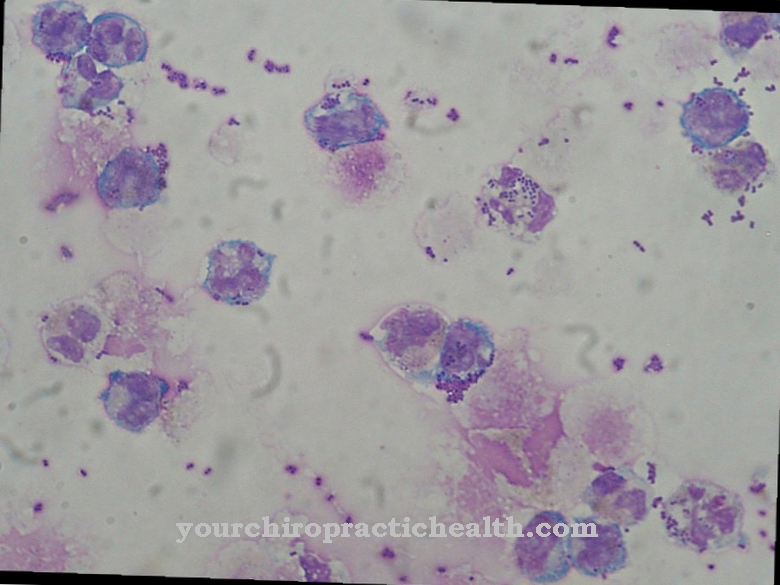Neisseria are bacteria from the group of gram-negative bacteria. They belong to the Neisseriaceae family.
What are Neisseria?
The Neisseria bacteria are so-called Proteobacteria. They form their own group within the Neisseriaceae and belong to the gram-negative bacteria. Gram-negative bacteria appear red in the Gram stain. In contrast to the gram-positive bacteria, they do not have a cell wall, but are only covered by a thin layer of murein. The distinction between gram-positive and gram-negative is crucial for choosing the right antibiotic.
The bacteriologist Albert Neisser discovered the group of bacteria. He was the first bacterium in the group to discover the pathogen causing gonorrhea, Neisseria gonorrhoeaea.
Neisseria exist as diplococci. Cocci are spherical bacteria. Diplococci are stored in pairs.Among the many different species of Neisseria there are four that are pathological to humans: Neisseria gonorrhoeae, Neisseria flavescens, Neisseria meningitidis, and Neisseria sicca.
Occurrence, Distribution & Properties
Neisseria gonorrhoeae, the causative agent of gonorrhea (gonorrhea), is common worldwide. Tripper is one of the most common sexually transmitted diseases (STIs), with more than 100 million cases worldwide. The disease predominantly affects people between the ages of 15 and 25. In Germany about 14 out of 100,000 inhabitants fall ill every year.
Humans are the only known reservoir for Neisseria gonorrhoeae. The transmission occurs only through direct contact with the mucous membrane. This occurs, for example, during sexual intercourse or during the birth process. Neisseria gonorrhoeae is particularly comfortable in the cells of the female and male urethra, in the uterine canal, in the rectum and in the conjunctiva of the eye.
The causative agent of purulent meningitis, Neisseria meningitidis, is also common worldwide. The bacteria are also known as meningococci. Humans are also the only hosts for Neisseria meningitidis. The pathogens die quickly outside the body. Thus, very close contact is required for infection. It is usually transmitted through nasopharyngeal secretions. The pathogen is transmitted when sneezing, kissing or coughing.
The meningococci can attach themselves with small pili to the mucous membranes in the nasopharynx and remain there for weeks or months. When the immune system is weakened, the bacteria multiply, penetrate the mucous membranes and reach the brain via the blood. There they can cause meningitis. Blood poisoning caused by the pathogen is feared.
Neisseria flavescens and Neisseria sicca both live in the mucous membranes of the upper respiratory tract. It has not yet been clarified what role they play as pathogens. Neisseria flavescens occurs in many different types of inflammation. Neisseria sicca appears to be involved in meningitis.
Illnesses & ailments
When infected with Neisseria gonorrhoeae, gonorrhea develops, which is also known colloquially as gonorrhea. It is one of the sexually transmitted diseases. The incubation period is two to three days. In individual cases, however, a week can pass. Five percent of those infected do not develop any symptoms. In particular, these symptom-free carriers play a crucial role in the spread of gonorrhea.
In men, the disease usually manifests itself as an inflammation of the urethra (urethritis). Itching and purulent discharge develop. Urination is painful due to the inflammation (alguria). Without treatment, the inflammation of the urethra lasts for two months. In rare cases, the epididymis or prostate can also become inflamed. Infertility can also develop.
In women, the first symptoms appear after about ten days. In addition to inflammation of the urethra, there is usually also inflammation of the cervix. Both inflammations cause a purulent discharge. The vaginal mucosa or Bartholin's glands are rarely inflamed. The infection can cause the uterus and fallopian tubes to stick together, which can lead to infertility.
Gonococcal infection of the eyes is very rare in adults. However, gonoblennorrhea can develop in newborn babies who are infected from their mother. Gonoblennorrhea is a purulent conjunctivitis that can lead to blindness. To prevent this, antibacterial eye drops are given to the children after birth (Credé prophylaxis).
Meningococci (Neisseria meningitidis) can cause meningitis. The disease can progress easily and heal spontaneously or take a highly acute course with a fatal outcome. The illness begins with a high fever, vomiting, chills, and convulsions. A characteristic symptom of meningitis is a stiff neck. Opisthotonus is also frequently observed. Opisthotonus is a spasm of the back muscles that causes the trunk and legs to overstretch. Infants also attract attention through apathy or restlessness. They refuse to eat and are sensitive to touch and light.
A dreaded complication of meningococcal meningitis is Waterhouse-Friderichsen syndrome. When the meningococci disintegrate, they release endotoxins. This process activates the coagulation system with massive thrombus formation in the blood vessels. Due to the thrombotic occlusion of the vessels, the peripheral areas are not supplied with sufficient blood. In addition, the coagulation factors in the blood are used up during coagulation. This leads to profuse bleeding into the skin, mucous membranes and internal organs. The adrenal cortex is particularly badly affected. It can be completely destroyed, resulting in an acute deficiency of the hormone cortisol. Without a direct start of therapy, almost 100 percent of patients die.

.jpg)















.jpg)



.jpg)

.jpg)




